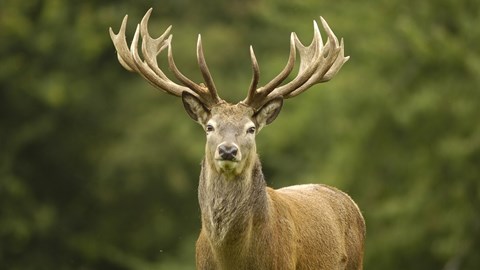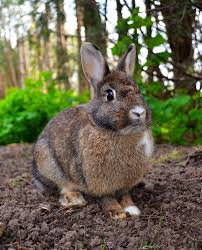Stamp: Christmas 2023 (Denmark Stamps - Christmas Seals 2023)
Christmas 2023 (Denmark Stamps - Christmas Seals 2023)
01 January (Denmark Stamps - Christmas Seals ) within release Julemærkefonden Christmas Seals goes into circulation Stamp Christmas 2023 face value None No Face Value
| Stamp Christmas 2023 in catalogues | |
|---|---|
| Colnect codes: | Col: DK CS-2023/23 |
Stamp is vertical format.
Also in the issue Julemærkefonden Christmas Seals:
- Stamp - Christmas 2023 face value None;
- Stamp - Christmas 2023 face value None;
- Stamp - Christmas 2023 face value None;
- Stamp - Christmas 2023 face value None;
- Stamp - Christmas 2023 face value None;
- Stamp - Christmas 2023 face value None;
- Stamp - Christmas 2023 face value None;
- Stamp - Christmas 2023 face value None;
- Stamp - Christmas 2023 face value None;
- Stamp - Christmas 2023 face value None;
- Stamp - Christmas 2023 face value None;
- Stamp - Christmas 2023 face value None;
- Stamp - Christmas 2023 face value None;
- Stamp - Christmas 2023 face value None;
- Stamp - Christmas 2023 face value None;
- Stamp - Christmas 2023 face value None;
- Stamp - Christmas 2023 face value None;
- Stamp - Christmas 2023 face value None;
- Stamp - Christmas 2023 face value None;
- Stamp - Christmas 2023 face value None;
- Stamp - Christmas 2023 face value None;
- Stamp - Christmas 2023 face value None;
- Stamp - Christmas 2023 face value None;
- Stamp - Christmas 2023 face value None;
- Stamp - Christmas 2023 face value None;
- Stamp - Christmas 2023 face value None;
- Stamp - Christmas 2023 face value None;
- Stamp - Christmas 2023 face value None;
- Stamp - Christmas 2023 face value None;
- Stamp - Christmas 2023 face value None;
- Stamp - Christmas 2023 face value None;
- Stamp - Christmas 2023 face value None;
- Stamp - Christmas 2023 face value None;
- Stamp - Christmas 2023 face value None;
- Stamp - Christmas 2023 face value None;
- Stamp - Christmas 2023 face value None;
- Stamp - Christmas 2023 face value None;
- Stamp - Christmas 2023 face value None;
- Stamp - Christmas 2023 face value None;
- Stamp - Christmas 2023 face value None;
- Stamp - Christmas 2023 face value None;
- Full Pane - Let's Go to the Christmas Forest face value 41*None;
- Mini Sheet - Let's Go to the Christmas Forest face value None;
- Booklet - Christmas 2023 face value None;
- Booklet - Christmas 2023 face value None;
- Mini Sheet - Christmas 2023 face value 10*None;
- Stamp - Christmas 2023 face value None;
- Stamp - Christmas 2023 face value None;
- Stamp - Christmas 2023 face value None;
- Stamp - Christmas 2023 face value None;
- Stamp - Christmas 2023 face value None;
- Mini Sheet - Christmas 2023 face value 10*None;
- Stamp - Christmas 2023 face value None;
- Stamp - Christmas 2023 face value None;
- Stamp - Christmas 2023 face value None;
- Stamp - Christmas 2023 face value None;
- Stamp - Christmas 2023 face value None;
- Stamp - Christmas 2023 face value None;
- Stamp - Christmas 2023 face value None;
- Stamp - Christmas 2023 face value None;
- Stamp - Christmas 2023 face value None;
- Stamp - Christmas 2023 face value None;
- Mini Sheet - Christmas 2023 face value None;
|
Data entry completed
80%
|
|
|---|---|
| Stamp Christmas 2023 in digits | |
| Country: | Denmark Stamps - Christmas Seals |
| Date: | 2023-01-01 |
| Size: | 47 x 62 |
| Emission: | Cinderella |
| Format: | Stamp |
| Face Value: | None No Face Value |
Stamp Christmas 2023 it reflects the thematic directions:
Animals are multicellular, eukaryotic organisms of the kingdom Animalia (also called Metazoa). All animals are motile, meaning they can move spontaneously and independently, at some point in their lives. Their body plan eventually becomes fixed as they develop, although some undergo a process of metamorphosis later on in their lives. All animals are heterotrophs: they must ingest other organisms or their products for sustenance.
Christmas or Christmas Day (Old English: Crīstesmæsse, meaning "Christ's Mass") is an annual festival commemorating the birth of Jesus Christ, observed most commonly on December 25 as a religious and cultural celebration among billions of people around the world. A feast central to the Christian liturgical year, it is prepared for by the season of Advent or the Nativity Fast and initiates the season of Christmastide, which historically in the West lasts twelve days and culminates on Twelfth Night; in some traditions, Christmastide includes an Octave. The traditional Christmas narrative, the Nativity of Jesus, delineated in the New Testament says that Jesus was born in Bethlehem, in accordance with messianic prophecies; when Joseph and Mary arrived in the city, the inn had no room and so they were offered a stable where the Christ Child was soon born, with angels proclaiming this news to shepherds who then disseminated the message furthermore. Christmas Day is a public holiday in many of the world's nations, is celebrated religiously by the vast majority of Christians, as well as culturally by a number of non-Christian people, and is an integral part of the holiday season, while some Christian groups reject the celebration. In several countries, celebrating Christmas Eve on December 24 has the main focus rather than December 25, with gift-giving and sharing a traditional meal with the family.
A deer (pl.: deer) or true deer is a hoofed ruminant ungulate of the family Cervidae. It is divided into subfamilies Cervinae (which includes, among others, muntjac, elk (wapiti), red deer, and fallow deer) and Capreolinae (which includes, among others reindeer (caribou), white-tailed deer, roe deer, and moose). Male deer of almost all species (except the water deer), as well as female reindeer, grow and shed new antlers each year. These antlers are bony extensions of the skull and are often used for combat between males.
Rabbits are small mammals in the family Leporidae (which also includes the hares), which is in the order Lagomorpha (which also includes pikas). The European rabbit, Oryctolagus cuniculus is the ancestor of the world's hundreds of breeds of domestic rabbit. Sylvilagus includes 13 wild rabbit species, among them the seven types of cottontail. The European rabbit, which has been introduced on every continent except Antarctica, is familiar throughout the world as a wild prey animal, a domesticated form of livestock and a pet. With its widespread effect on ecologies and cultures, in many areas of the world, the rabbit is a part of daily life – as food, clothing, a companion, and a source of artistic inspiration.




